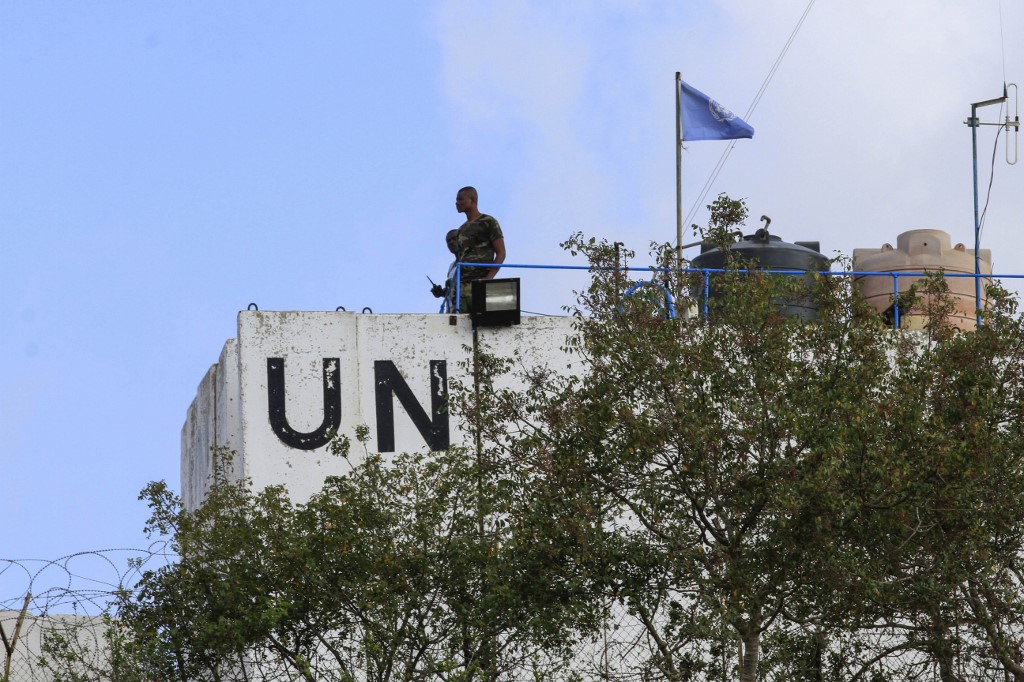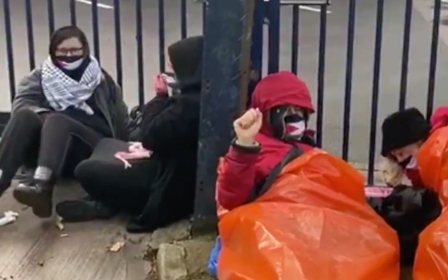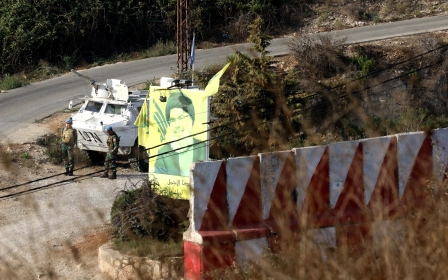'The sound of death': How Israel terrorises Lebanon from the skies

In the wee hours of Christmas morning, I received a text message from a Lebanese Palestinian friend in Beirut, sent from the hallway of his apartment. He had run there after being jolted from his sleep by the sound of Israeli jets - later reported to be Israeli jets and/or missiles en route to targets in Syria - and the sensation that something in the vicinity was about to explode.
Of course, Israeli breaches of Lebanese airspace are nothing new. Israel has long been notorious for violating not only Lebanon’s skies - and territory in general - but also Lebanese eardrums and mental and emotional wellbeing.
Israel has internalised the worldview of its imperial American buddy, according to which the homeland's borders are sacrosanct but everyone else's can be trampled at will
In his book Pity the Nation about the Lebanese civil war of 1975-90, late journalist Robert Fisk describes the terrific noise generated during an episode circa 1978 in which two Israeli jets “broke the sound barrier as they flew at low level over west Beirut, shattering the shop-front window panes on [the city’s iconic] Hamra Street with their sonic booms”.
And it’s been pretty much nonstop ruckus ever since. Granted, it’s not a subject that generates much media attention, but if one puts in a bit of time on Google, the issue does turn up. There’s a 2017 Reuters dispatch about the sonic booms that “broke windows and shook buildings” in the southern Lebanese city of Saida, while also causing “panic”.
Then there’s a 2007 Jerusalem Post writeup about sonic booms over Nabatiyeh and Marjayoun - the latter a majority-Christian city that formerly served as the headquarters of the South Lebanon Army, an Israeli proxy militia that tortured and terrorised with abandon during the two-decade Israeli occupation of southern Lebanon that ended in May of 2000.
New MEE newsletter: Jerusalem Dispatch
Sign up to get the latest insights and analysis on Israel-Palestine, alongside Turkey Unpacked and other MEE newsletters
And there’s a 1998 BBC headline: “Israeli planes create sonic boom confusion over Lebanon”, concerning mock raids staged by the Israeli Air Force over Beirut and environs.
To be sure, the relative media disinterest is not for a lack of information. Lebanon hardly hesitates to publicise flagrantly illegal violations of its airspace by its hostile southern neighbour, and has on various occasions filed complaints with the United Nations - most recently this month.
Vicious history
In March 2019, UN Secretary General Antonio Guterres reported that Israel “continued to violate Lebanese airspace almost daily, in violation of resolution 1701 (2006) and Lebanese sovereignty”. Resolution 1701 was adopted at the end of the 34-day Israeli war on Lebanon that killed some 1,200 people in the country, the majority of them civilians.
Given Israel’s track record in Lebanon, a vicious history that also includes the 1982 invasion that killed an estimated 20,000 - as usual, overwhelmingly civilians - it’s not difficult to see why overflights and sonic booms would trigger “panic” and terror.
In his report, Guterres noted that, from November 2018 until February 2019, the United Nations Interim Force in Lebanon (the actually not-so-interim UNIFIL, dating as it does from 1978) had recorded “96.5 air space violations each month, with an average of 262 overflight hours”. Unmanned aerial vehicles, he said, “accounted for approximately 77 percent of the violations, while the remaining violations involved fighter jets or unidentified aircraft”.
One can only imagine the massive hissy fit and/or regional war that would ensue were even a fraction of these violations to occur in the opposite direction. Indeed, Israel has internalised the worldview of its imperial American buddy, according to which the homeland’s borders are sacrosanct but everyone else’s can be trampled at will.
Psychological warfare
The Gaza Strip is another territory where Israel utilises continuous airspace violations as a means of psychological warfare - in other words, to keep the population good and traumatised.
In a 2013 article for Al Jazeera, journalist Jonathan Cook quoted Hamdi Shaqura of the Palestinian Centre for Human Rights on the ubiquitousness of Israeli drones in Gaza, despite Israel’s supposed “withdrawal” from the territory in 2005: “The buzz is the sound of death. There is no escape, nowhere is private. It is a reminder that, whatever Israel and the international community assert, the occupation has not ended.”
The “sound of death”, it bears underscoring, is no exaggeration. Among the myriad Palestinian civilians slaughtered by missile-equipped Israeli drones were four children playing on a Gaza beach in 2014 - a crime for which Israel charitably exonerated itself the following year.
Back in Lebanon, meanwhile, a recent uptick in Israeli Air Force activity prompted the 10 January Associated Press headline: “Daily low flying Israeli jets over Lebanon spreading jitters.”
Mentioning the Christmastime “terrorising” of Beirut residents, the article goes on to relay UNIFIL’s calculations that, between June and October 2020, Israel committed a daily average of 12.63 airspace violations, with drones accounting for about 95 percent.
The real terrorists
Lebanese “jitters” have been particularly acute of late, even though the prospect of some sort of regional conflagration in the final days of the Trump presidency in the US did not transpire. And the psychological torment induced by Israel’s aerial collective punishment is only compounded by Lebanon’s present circumstances.
The country is still reeling from the August explosion that devastated Beirut, and a domestic economic collapse and soaring coronavirus rates are traumatic enough on their own, without adding yet more sonic booms and drones to the mix.
As Israel persists in relentlessly portraying itself as the world’s preeminent victim of terror, it’s worth keeping track of who is really doing the terrorising.
The views expressed in this article belong to the author and do not necessarily reflect the editorial policy of Middle East Eye.
This article is available in French on Middle East Eye French edition.
Middle East Eye delivers independent and unrivalled coverage and analysis of the Middle East, North Africa and beyond. To learn more about republishing this content and the associated fees, please fill out this form. More about MEE can be found here.







